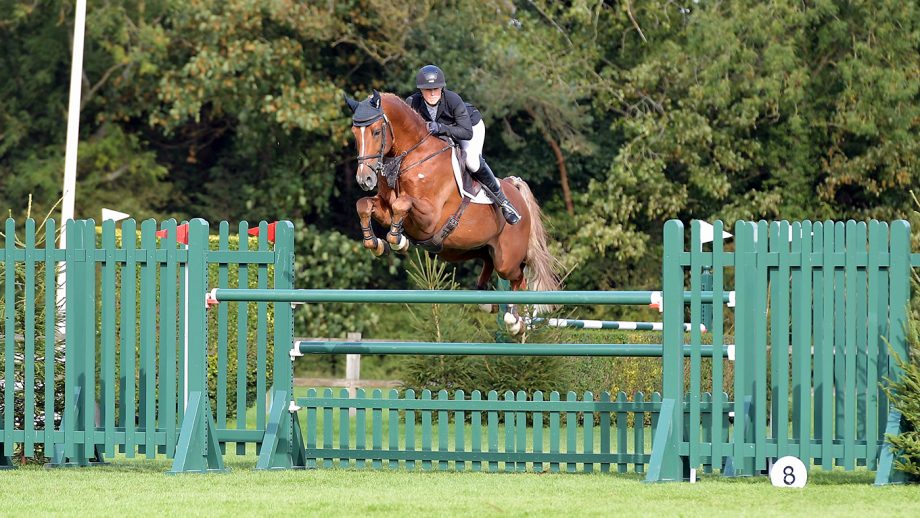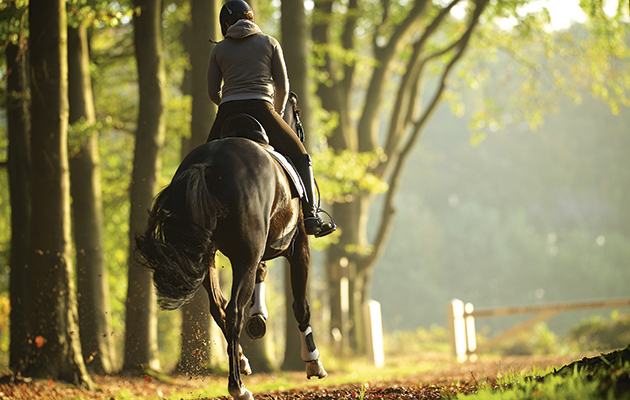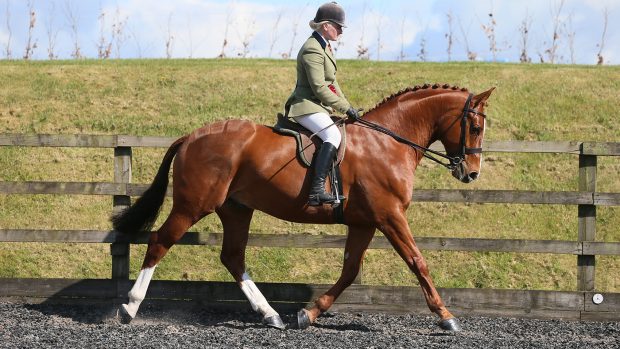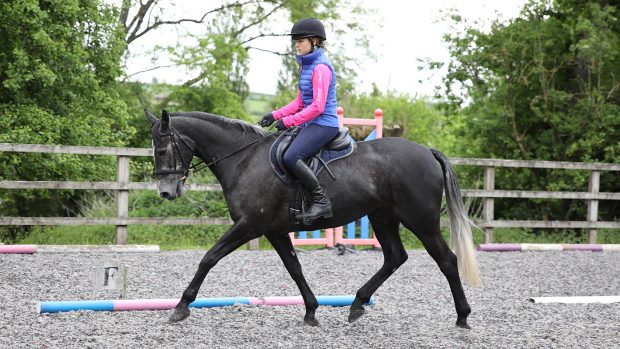Show producer Craig Elenor (pictured) uses a simple leading exercise for preparing a horse for in-hand showing by improving the walk and encouraging self-carriage
Aim
The walk is the most important gait for me and it’s vital that you have it in place before you start to trot. I like to see a horse with a nice swinging, relaxed walk. One of my pet hates is seeing a horse curled around the handler and not working straight.
If the horse is going on to a ridden career, it’s important the correct groundwork is put in place while they’re young. Straightness is vital for them to carry themselves correctly.
The walk is often overlooked in training — but it’s the first and last pace a judge sees. I use the following in-hand exercise on our long driveway, but a quiet road or forest track is also a good option.
The exercise
1. Find a suitable place to lead (as mentioned above). I tend to do this on a hard surface, not a manège, as it teaches the horse to walk properly. They are also less likely to bounce about on the hard, too. I start all my youngsters in a Parelli halter, with a bridle underneath. Once they have mastered the exercise and are walking correctly, I use a coupling straight to the bit but not before, as you don’t want to be pulling on their mouths — they need to be soft to your hand.
2. I position myself next to the horse’s shoulder on the nearside and use a fence or hedge to keep him straight. I hold the lead eight to 10 inches from the clip, loose with an open hand. I encourage the horse to walk at his natural pace, not hanging behind or too fast on his forehand — I want him to walk in natural self-carriage, not overbending, and I don’t like to do this exercise in side reins. The horse needs to learn to stretch and walk naturally. I ask him to walk in his own space, not pushing on to me, but if he does, I correct him instantly by nudging him on the shoulder to ask him to move back into his own space.
3. I walk to the end of the drive then ask the horse to turn, making sure he’s still in his relaxed walk — I ensure he keeps stepping under and tracking up. His head must stay straight and round so he is soft through his back with his hindleg engaged, so when you ask for trot the power is there.
4. The first few times I do this exercise I walk back. Once the horse has mastered this, I ask him to trot back once he has turned and walked a couple of straight, relaxed strides. The trot needs to follow all the rules of the walk, but I would hold them closer to the bit and steer with a finger on the coupling as you would with a rein. The trot shouldn’t be attempted until the walk is correct.
Continued below…

#SundaySchool: the showjumping ‘gym’ with Holly Smith
The international showjumper talks us through this multi-fence

#SundaySchool: how to improve control with Blyth Tait

Subscribe to Horse & Hound this spring for great savings
Tips and pitfalls
- Make sure you alternate walking and trotting back after the turn, so that the horse doesn’t anticipate and shorten his walk.
- Try to apply this exercise in everyday life, such as when you are walking the horse to the paddock.
- Don’t over-practise. It’s important to keep the horse fresh and enjoying work.
- Handlers interfering with the horse’s mouth too much or being heavy with their hands can ruin a youngster’s walk. Ensure you are being soft.
- If you have a horse who curls round in front of you, I would do this exercise leading from the offside.
We continue to publish Horse & Hound magazine weekly during the coronavirus pandemic, as well as keeping horseandhound.co.uk up to date with all the breaking news, features and more. Click here for info about magazine subscriptions (six issues for £6) and access to our premium H&H Plus content online.





